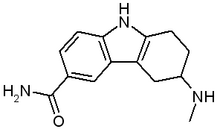CANCUN, MEXICO -- Estrogen seems to exacerbate headache in women by at least two mechanisms, but the resulting hormonal headaches can be treated by standard short-term and preventive therapies in addition to manipulating levels of estradiol, according to Dr. Dawn A. Marcus.
Cycling estradiol modifies neurotransmitters, and during the course of cycling elevated estradiol protects against headache and low estradiol aggravates headache, she said at a symposium sponsored by the American Headache Society.
But estrogen itself has multifactorial and sometimes contradictory effects on headache. Increased estrogen results in increases in the headache-inhibiting neurotransmitters such as serotonin, [gamma]-aminobutyric acid (GABA), and the endorphins.
And it decreases headache-activating neurotransmitters such as dopamine and norepinephrine, said Dr. Marcus of the University of Pittsburgh.
On the other hand, increased estrogen seems to increase sensitization in the central nervous system, and this central sensitization plays a key role in current theories of migraine.
Dr. Marcus offered thoughts about several types of hormonal headaches.
In treating menstrual migraine, one must first verify the link between menses and headache activity by having women plot their headaches and their menstrual periods in diaries. Otherwise you end up treating them for a menstrual headache that doesn't get better because the headache wasn't always occurring menstrually.
"Unfortunately, it's very easy for us women to link our menses to a lot of negative things that happen in our lives," Dr. Marcus said. "Especially if you get one or two migraines a month, it's real easy to just assume they must occur with ovulation and with your menstrual period."
Many treatments have established efficacy in menstrual migraine. Acute attacks often respond to NSAIDs or triptans. Continuous oral contraceptives with a cycle off every three months will minimize the amount of time women are cycling between high and low levels of estradiol.
Miniprophylaxis can be helpful in women with recalcitrant headaches that don't respond to short-term treatment. This involves the off-label use of estradiol gel (1.5 mg) or a patch (100 [micro]g) from 3 days before to 3 days after menstrual onset. Standard therapies such as NSAIDs, [beta]-blockers, and triptans can similarly be used prophylactically. Dr. Marcus mentioned using 25 mg of sumatriptan t.i.d., 1 mg of naratriptan b.i.d., or 2.5 mg of frovatriptan b.i.d. or daily.
Research studies have demonstrated benefits for bromocriptine, tamoxifen, and agonists of gonadotropin-releasing hormone, but Dr. Marcus cautioned against their use in the clinic. Long-term safety has not been demonstrated, and these agents should be considered experimental.
Many women have headache related to the use of oral contraceptives, and studies have shown that migraine is 10 times more prevalent in the women who use these agents.
Typically, women get headaches on specific days of their placebo week, as their estradiol levels are dropping. "Women will generally tell you, 'I know exactly the day I'm going to have a migraine. It's always the Tuesday of my placebo week,'" Dr. Marcus said.
Nevertheless, oral contraception is generally safe to use in migraineurs.
As with menstrual headaches, one treatment for headaches associated with oral contraceptives is to prescribe continuous use to minimize the cycling to once every 3 months. One may also reduce the dose of the oral contraceptive or switch to a progestin preparation.
If the character of a woman's migraine changes during use of oral contraceptives, if she develops an aura where she didn't have one before, for example, oral contraceptives should be discontinued and alternative means of contraception should be used.
Migraineurs are often told not to breast-feed because of a few reports in the literature of women who had terrible migraines associated with lactation. On the other hand, in a large study involving 2,500 nursing migraineurs over a 6-year period only five individuals experienced changes in their headaches.
Dr. Marcus noted that lactation increases levels of oxytocin and vasopressin, both of which are antinociceptive compounds and should actually tend to decrease headache pain.
She said that migraineurs should not be discouraged from nursing, although use of medications will necessarily be restricted. Triptans, for example, can be used only if women pump and dump milk for 4-6 hours after taking a dose.
BY ROBERT FINN
San Francisco Bureau
COPYRIGHT 2004 International Medical News Group
COPYRIGHT 2004 Gale Group



